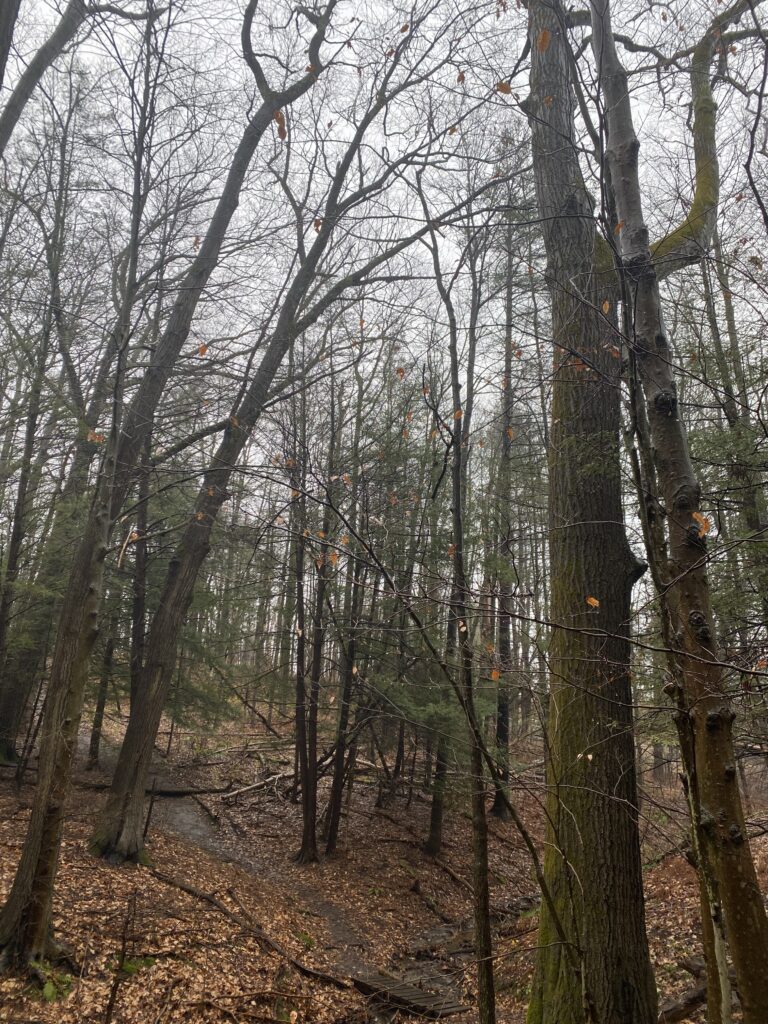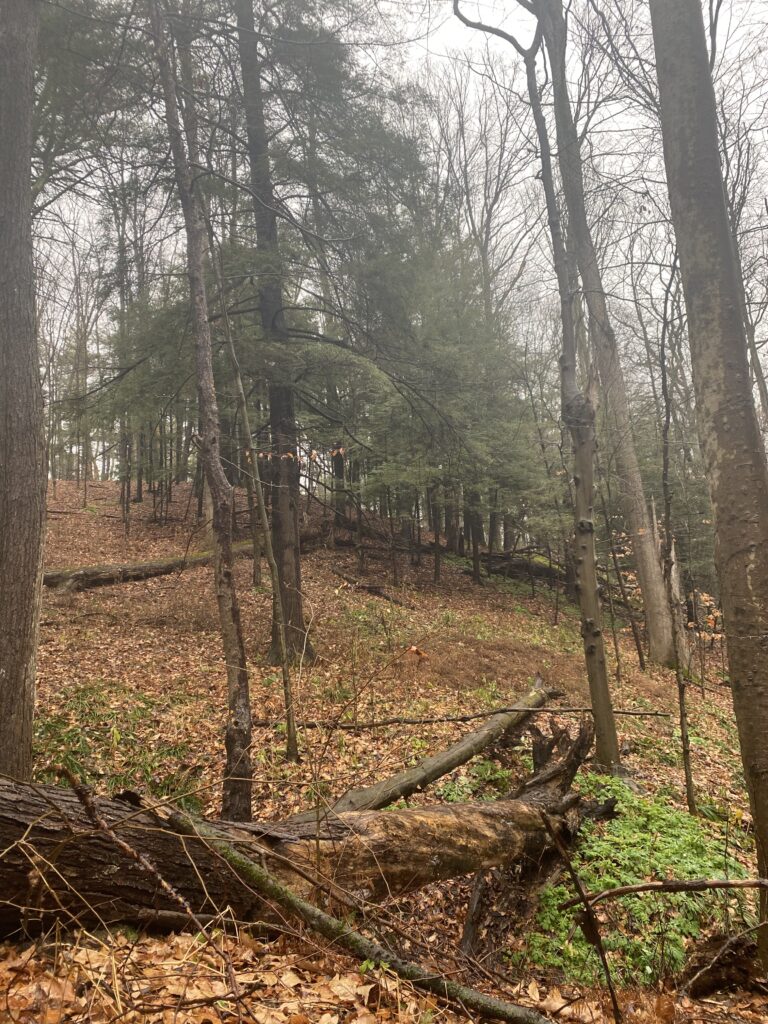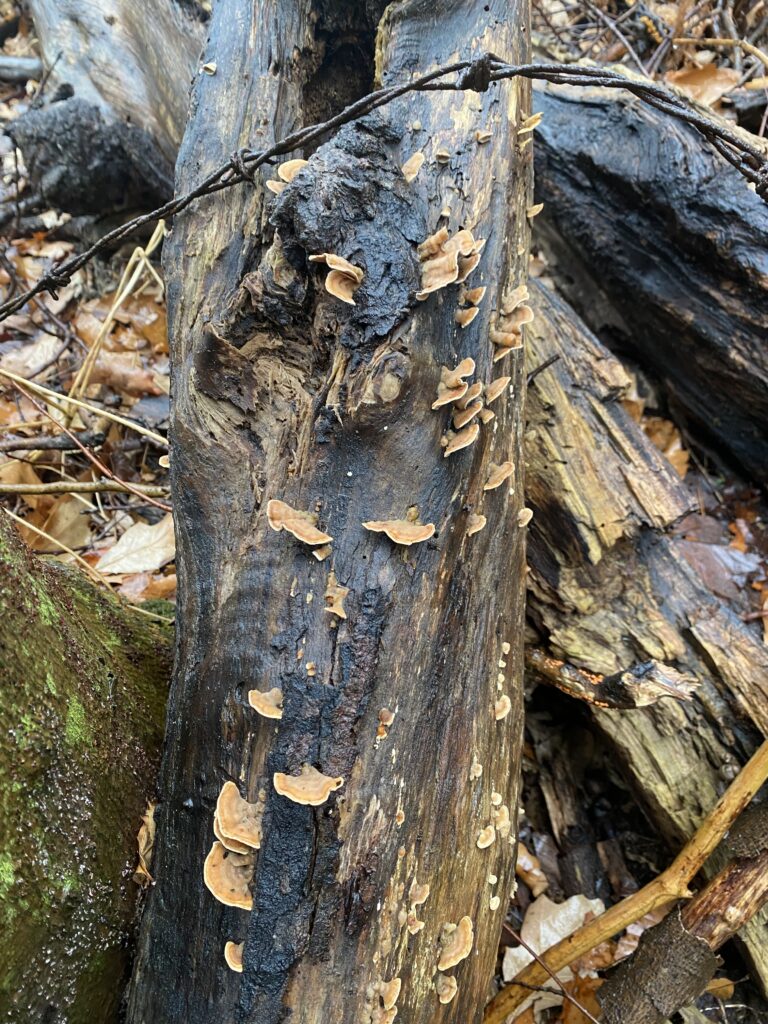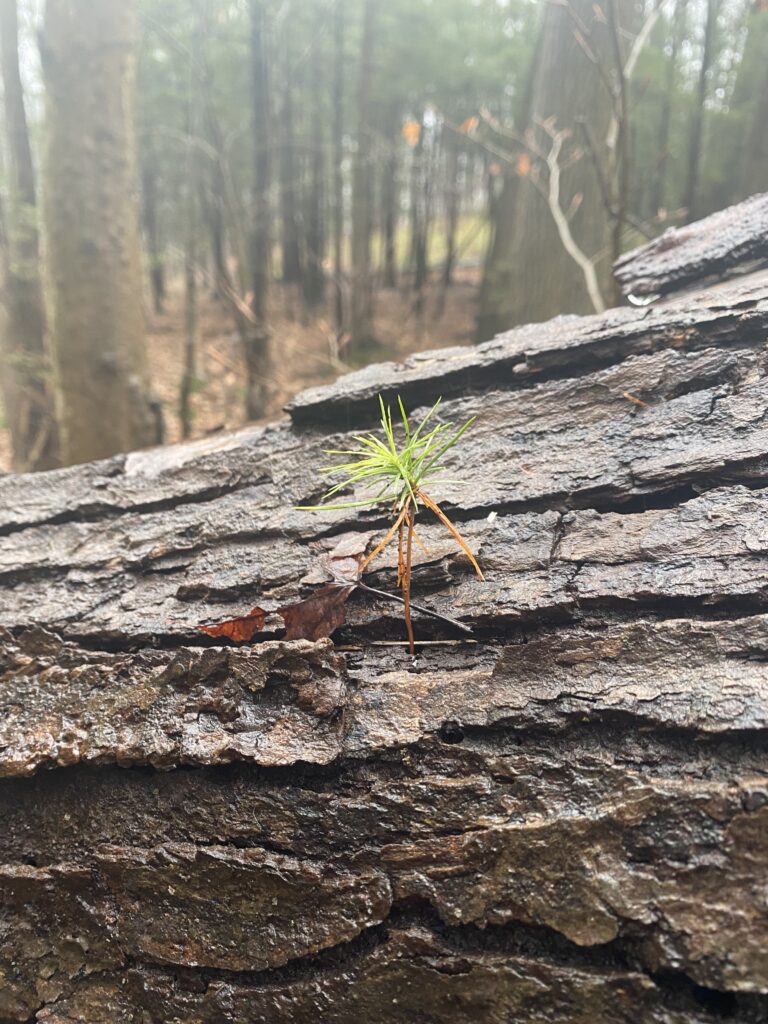During my last visit to my phenology spot for the semester, I recognized some key changes in the area. One of my first observations was that almost all broad-leaf trees have dropped their leaves except for young American beech trees. Conifers keep their leaves years round, so I knew that they would be some of the few plants left that are still green, yet I was surprised to see many American beech trees holding onto some of their leaves. While there is no persistent fruit in my area, there are persistent shrubs such as intermediate wood fern and some true sedges. Moss still lines the landscape along with a recent burst of fungi. These growing fungi can be a sign that something is decaying, and that decomposers are doing their job. Another sign of these decomposers is a reduction is the number of leaves lining the ground. The day that I chose to visit my spot was, unintentionally, rainy. Due to this poor weather and the presence of many leaves still on the forest floor, I was unable to identify any animal tracks, but there were still signs of animal activity. Some of these signs include many noticeable woodpecker feeding holes and other marks in tree bark. Despite the rain, I was still able to observe active birds and squirrels at my spot showing that animal activity has not noticeably decreased.



I truly enjoy going to my phenology spot. I value the calming walk through Centennial Woods along with the peaceful sound of Centennial Brook. I always take a moment to listen to the brook while sitting on the fallen trees at the center of my spot. My favorite part of my phenology spot, however, has to be the small details. These details become more obvious each time I visit and include the ever-changing fungi and the new plants growing. I especially enjoy when I can find some witch’s butter growing. Its orange hue adds a pop of color to the forest and knowing it edible, I am always temped to try some.



